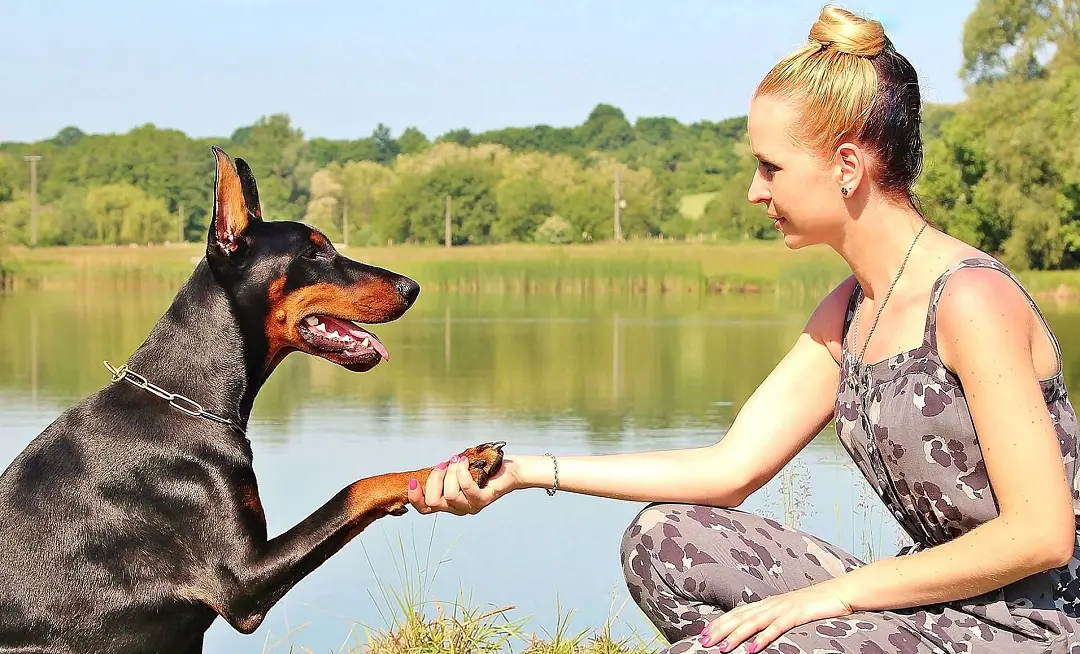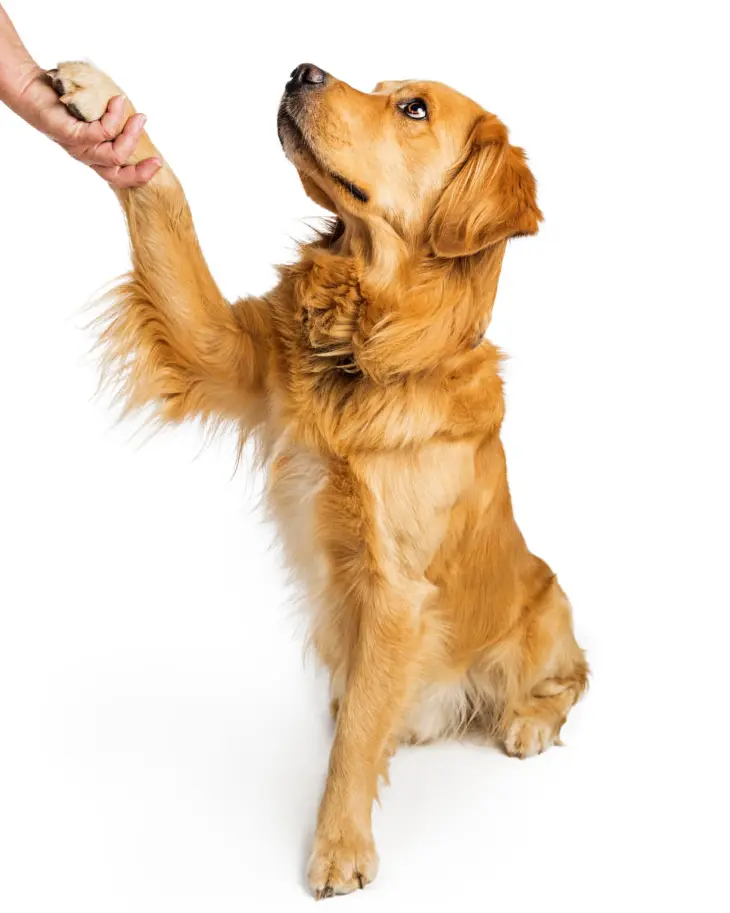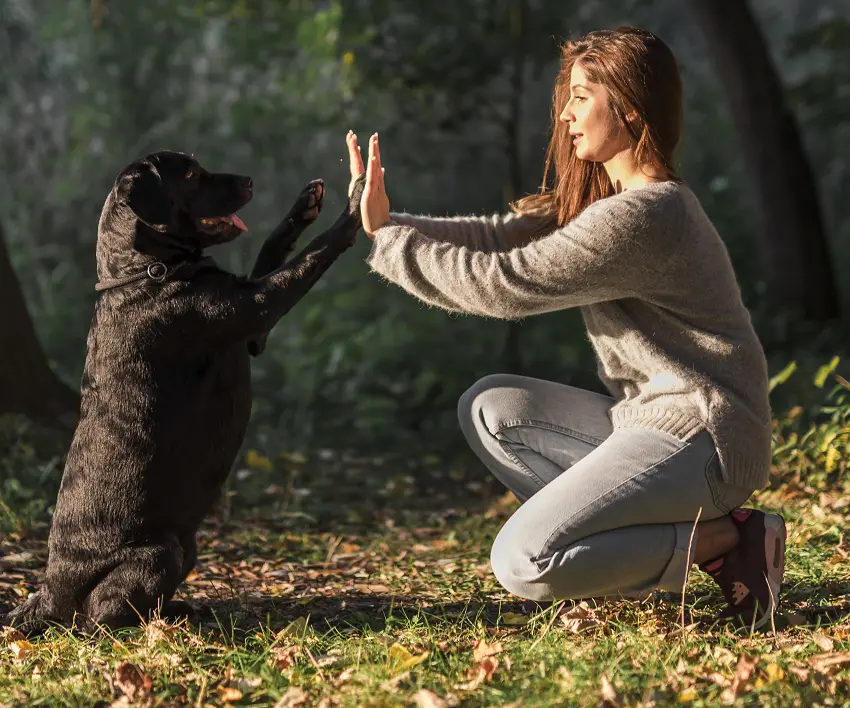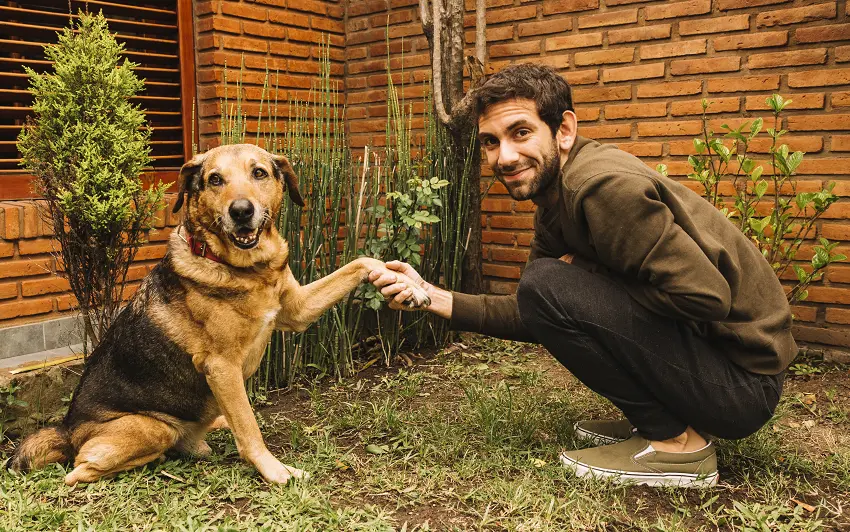How To Teach A Dog To Shake Paws?
If you just brought home a dog, you’re probably looking for tricks to teach the little pooch. I am guilty of this obsession, too, and the first trick I’ve taught Sherlock is the ‘shake paws’ drill. Knowing how to teach a dog to shake is a classic trick in the bag. You hold out your hand and wait for your pup to put its paw on it. Expect the puppy to sniff and lick while it figures out what to do. The moment its paw lands on your hand, shake it, and give a reward.
That’s the trick in a nutshell, but to make sure that your little doggo will learn it well, the following are the steps you need to take:

How to teach a puppy to shake?

Teaching a dog to shake is fairly easy, but you have to understand that each dog is different. Yours may learn faster or slower than other canines. It’s all about consistency and patience. For this, you need some smelly treats, a clicker, and some patience. Please read here how to teach your dog to roll over.
- Step 1. Ask your dog to sit
Before you teach your dog how to shake, you must train it to sit first. Remember that basic obedience training is necessary before proceeding with other training drills. Also, by asking your dog to sit, it would use its front paws, and it will be more relaxed.
- Step 2. Place a treat on your palm
While your dog is seated, place a smelly treat in your palm. Show it to your dog, then close your palm with the treat inside. Shake it in front of your dog. Let it sniff, lick, and try to dig through your palms. However, you should watch out for aggressive biting.
When your dog’s paws land on your enclosed palm, open it and give the pooch its reward. Make sure that you click the clicker simultaneously as your dog puts its paw on your hand. The treat should follow immediately as dogs have short attention spans. please read here what does it mean when a dog puts his paw on you
- Step 3. Add the verbal cue
Verbal cues are essential, especially if you’re teaching your dog tricks like how to shake paws. While holding a treat and shaking your hand, say the word ‘shake’. Again, once your dog puts its paw on your palm, click then open your hands for the reward.
Do this repeatedly and consistently. Remember to use the same verbal cue so your dog won’t be confused about the trick.
- Step 4. Keep practicing
To ensure that the shake trick will be wired on your dog’s brain, you should practice it regularly. Practice the shake drill at least three times a day for five minutes each. You can do so before your dog has its meal, so it’s highly food driven and willing to follow your commands.
- Step 5. Increase the difficulty
Once your dog shakes your hand with a little coaxing, it’s time to increase the difficulty level. After your dog puts its paw on your hand, shake it longer before letting it go. Remember to increase the duration in small increments so your dog won’t freak out. After shaking its paw, release it, click, and then give the reward.
While you’re shaking your dog’s paw, keep repeating the verbal cue ‘shake’, so your dog knows that it’s still part of the drill.
Little by little, increase the duration of the shake to teach your dog patience. However, avoid taking too long, or your doggo will get bored.
- Step 6. Remove the treat
Once your dog has mastered the art of shaking paws, the next step is to shed the treats. This part is very important, so your pooch will not take food as a bribe to perform the paw shake.
Start by shaking with your hand then rewarding with the other. This will make your dog realize that the reward doesn’t come from the shaking hand.
Over time, remove the treats randomly, but keep using the clicker. The goal here is for your dog to consider the clicking sound as the reward instead of the food. Do the shedding of the treats slowly so your dog won’t lose interest over the drill.
- Step 7. Do it with your other hand
For sure, you’ve trained your dog to shake with your dominant hand. But to make the trick more fun, consider teaching your dog to shake with your other hand. This will also teach the dog to shake with the paw closest to the hand you’re offering.
Do the same steps above until your dog learns to shake on both paws.
How to teach a dog to high five

Another trick close to shaking paws is high five. It involves your dog putting its paws on your palm for a short period. You can do this while training your dog to shake hands.
However, you should use clear verbal cues so your dog won’t be confused. Instead of holding your dog’s paws, you simply offer your open palms to it and say the cue ‘high five’! It has very little difference in shaking, and it is much easier for your dog to learn.
Dos and don’ts of teaching your dog how to shake

When teaching your dog how to shake, there are some things you need to keep in mind. For guaranteed success, here are some dos and don’ts:
- DO let your dog do it on its own. Never lift your dog’s paws to your palm when teaching how to shake. While this may seem productive, it will not teach your dog to it manually. Over time, your dog will think that you have to lift its paws for the trick. Just be patient and wait for the pooch to put its paw on your hand.
- DON’T shout at your dog. I know that teaching the shake trick can be frustrating as some dogs are not as responsive as others. Despite that, you should remain patient and consistent.
- DO take it slow. Just like with other tricks, it will help if you break down the process in small steps. Also, start small, so your dog won’t lose interest. Observe shorter shake durations and quick rewards afterward.
- DON’T punish your dog. Your dog may bite or scratch your hand instead of shaking it. These are normal reactions since the pooch is yet to learn how to shake. Be patient and say a firm ‘No!’ if your dog tries to hurt you.
- DO remove the treats. Treats are only lures and motivations. Over time, you should shed it as your dog shakes your hand consistently. This will make the trick ‘proofed’ into your dog even without the food reward.
- DON’T give up. Each dog is unique, and so is their process of learning new commands. Be patient and give your doggo some time to absorb the process of shaking your hand. Even the most stubborn dog will yield to your patience and consistency.
Conclusion
Knowing how to teach a dog to shake involves patience, consistency, and some yummy treats. The key here is introducing the new command with something positive. It will encourage your dog to follow suit and respond well. But then again, it doesn’t happen overnight. You have to practice with your dog every day until it learns how to shake.
